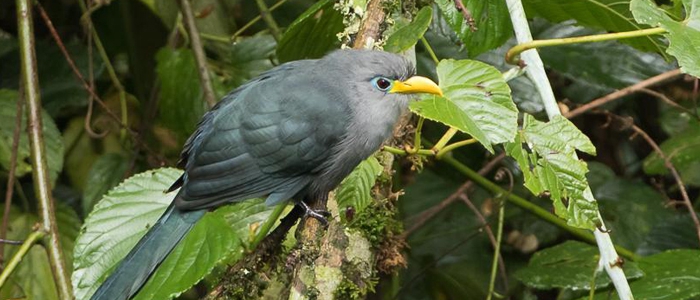

What to Know About Goliath Heron in Uganda?
The Goliath Heron in Uganda is one of the African Uganda birds seen during a Uganda birding tour.
Also known as the giant heron, it is the largest wading bird in the heron family, Ardeidae, classified under Kingdom Animalia, Phylum Chordata, Class Aves, Order Pelecaniformes, and genus Ardea.
This impressive bird is frequently observed on Uganda birdwatching safaris, Uganda birding safaris, or birding safaris in Uganda. Its majestic presence is a highlight for anyone enjoying birding in Uganda.
The Goliath heron is the world’s largest living heron species which is binomially known as the Ardea goliath found within the Ardeidae or heron family. It is a large wading species that is found of inhabiting Sub-Saharan, Southwest and South of Asia.
This bird species has a mass weight of about 5 kilograms and it comprises of strong and broad wingspan that measure upto 180 to 210 centimeters. The bird has a lifespan of about 22 years hence a long species measuring between 135 to 150 centimeters.
The physical description of the Goliath heron
Goliath heron features a slate-grey layer of feathers comprising of deep chestnuted head and crest along with the back and sides of the neck with the face. It has a white streaked black upper breast and foreneck and a long blue-grey feathers at the base of the neck. The bird also has a slightly streaked black thighs and belly along with the dark buff lower breast.
This bird species comprises of the bushy chestnut crest at the head baring a yellowish-green eye ring and lores. It is also characterised with a sharp, strong and long pointed bill that has a blackish upper mandible with a horn below. Both the male and female bird species have similar sexes and do bare black long legs and feet along with the eyes that are yellowish in colour. However the juvenile is duller, but do resmble the adult and the species is world’s largest heron standing up to 150 meters tall.
Behaviour of the Goliath Heron
The bird is a slow water species and always moves slowly than any other heron in deeper or swallow waters and on the floating vegetation while watching its feet hence searching and fishing for the prey within water. If the prey is seen, the bird quicky spears it with its sharp and long bill and the prey mainly include large fish weighing up to 2 to 3 kilograms and always carries it at the shores of water with the aim of eaingt it quickly.
During the hunting process, the Goliath heron stands still in a motionless state for a period of one hour while adopting tall posture for enhanced visual appreciation hence a passive hunter. In the process of fishing, due to the harassment by other fish predators, the bird species may loose its prey.
Goliath heron is a solitary bird species and is often seen singly and sometimes being isolated in pairs hence a nocturnal heron which more active during night hours although also seen feeding in wetlands at dusk. It is a sedentary and very shy bird which appears to move slow and very ponderous.
The Goliath heron is generally a silent bird outside the breeding season although it utters a sound similar to raucous barksof an old dog and the call includes squawks, croaks, gurgles and growls.
The habitat and range of the Goliath Heron
This bird species inhabits a variety of lakes, mangroves, wetlands and river deltas and sometimes the coastal Islands in both fresh waters and salt hence widely spread in sub-Saharan Africa along with some small populations that are found dwelling within the Southwest and Southern Asia, Iraq, Pakistan and Syria.
The bird species is slow in flight and always flies with held legs and at angle below the body but not horizontally as it is the case in other herons. While in flight, the bird flies with a heavy slow laboured wing beats and do fly very long distances.
Breeding and reproduction process of the Goliath Heron
During breeding season that takes place from June to January, the bird occasionally nests in mixed flocks with other heron species but usually solitary. Both the adult male and female do construct a large nest out of sticks and located in low bushes, mangroves, up high in trees, on rocks and sometimes on the reedbed grounded areas close and above water.
Goliath heron is a monogamous breeder species with unknown courtship displays and also develop long feathers on the neck, breast and crest before the beginning of the breeding season occuring in the rainy period. During the reproduction process, the adult female lays about 2 to 3 eggs that are pale bluish in colour.
Both parents play a role in the incubation process of the clutch which lasts for a period of 4 weeks. After hatching, the chicks are cared for by both adults and the young ones do develop wing feathers that are strong enough for flight to occur at about 6 weeks of age.
More posts for you

Over 50 excellent reviews on Safaribookings.
 >
> 




